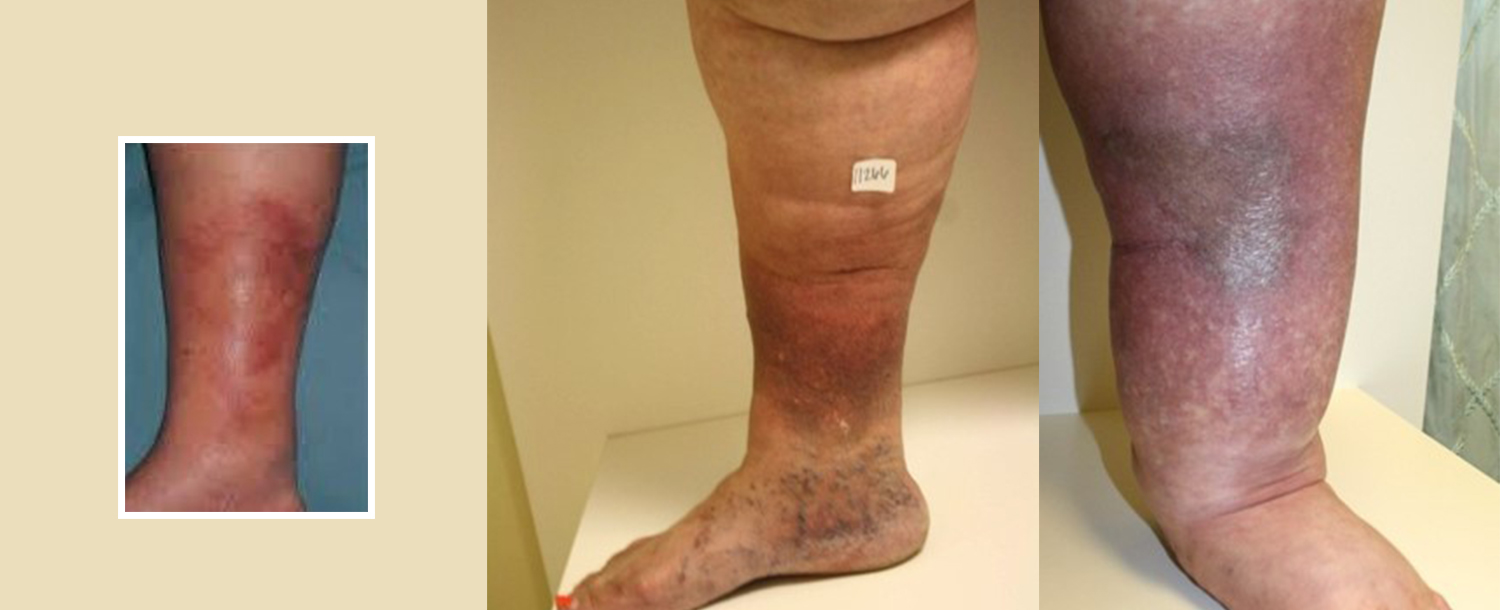
Lipodermatosclerosis
Lipodermatosclerosis (LDS), also called panniculitis, is a chronic condition usually affecting the skin on the inner lower leg just above the ankle.
Lipo (fat) dermato (skin) sclerosis (scarring) is exactly what the name says, scarring of the skin and fat tissue under the skin. The scarring usually results from chronic pressure and inflammation in the skin. When severe, the scarring can progress and make the leg appear like an upside down champagne bottle.
The exact mechanism occurring in the skin of LDS patients is not fully understood, however, the increased pressure, tissue inflammation and resultant tissue scarring seen in LDS usually occurs because of a combination situations.
1) Chronic Venous Disease / Insufficiency or venous stasis is caused from increased pressure in the leg veins, especially in the lower leg and ankle. The increased pressure in the veins, in turn, causes inflammation of the skin.
2) Limited ability to walk – When there is limited ability to walk, patients usually utilize a cane or walker and tend to spend more time sitting. The calf and feet muscles are critical to squeezing blood and fluid out of the lower leg. If someone’s ability to walk is affected, then the calf and feet muscles can’t effectively pump, and fluid and blood accumulate in the lower leg increasing pressure and causing inflammation. This mechanism is sometimes called calf-pump failure.
3) Idiopathic, means the actual cause of the inflammation resulting in LDS is unknown. Approximately 50% of the time, the underlying cause for LDS is idiopathic.
Treatments are aimed at decreasing the pressure and inflammation in the lower leg. Treating the underlying venous disease, use of graduated compression stockings, leg elevation, increased exercise and anti-inflammatory topical creams can all help the condition. Once LDS is established, scarring can replace the skin and fat underneath the skin. Once the scaring process begins, the skin in the lower leg can become permanently and irreversibly damaged. Treatment at this stage is only to prevent further progression.
